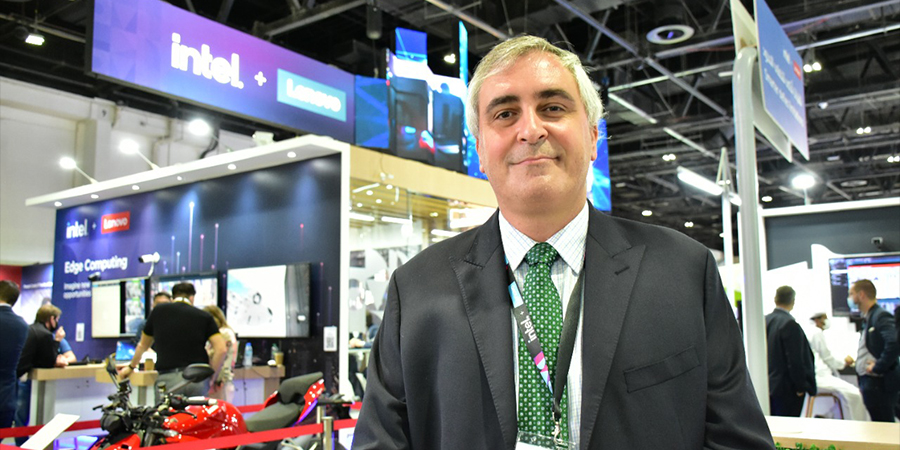Antonio Bocigas, Lenovo’s telecom director for the EMEA region, has spoken with Telecom Review during the GITEX 2021 event. He talked about the biggest telecom trends globally and how the company influences the digital transformation in the region.
Can you tell us what you are showcasing in this year's GITEX and the reason behind this?
This year in GITEX, we see that we are in the middle of digital transformation. During the last two years, challenges on how we work and connect emerged. Having said that, Lenovo is showing use cases around healthcare, smart cities, education, gaming, edge computing, and telecom. These will solve the challenges that citizens and companies are facing these days.
We are demonstrating how we are supporting IT Leaders to explore the power of new innovations to transform their organizations and equipping them with smarter technology solutions that inspire them to deliver mission critical solutions to unlock business value.
As more telco data centers shift to the cloud, what is the importance of Lenovo's LOC-A automated provisioning solutions?
Lenovo’s open cloud automation is a solution that is going to help us to provide and enable different applications and use cases faster than before. Instead of having people managing the services out of the box, we’re putting the full infrastructure in an automated way.
In this way, we’re able to save resources in the data center because the automation removes tasks of no value. The cloud deployment process often involves manual processes to benefit from some level of automation tools that exist. However, this process is sequential, time-consuming and error-prone. LOC-A’s end-to-end automation simplifies and streamlines manual, error-prone processes. LOC-A provides an automation platform that orchestrates the entire chain of events/tools from hardware configuration to Operating Systems installation to Cloud and networking layer deployment.
What is your outlook on the telecom trends in the region? In your opinion, which trend will be dominant and why?
The trends in the region and the rest of the world are around four big areas: 5G, which every single service provider is deploying today as part of their strategies and networks; maximizing the cloud as everything shifts towards it; network virtualization; and thinking how to deliver and enable edge computing services.
Edge computing means that instead of having specific data centers in specific sites, we’re going to have thousands of sites across the country, in order to enable services that will have lower latencies, more bandwidth, and better customer experience.
What are your thoughts regarding the ICT innovation driving digital transformation in the region?
Digital transformation is a journey. For Lenovo, what we're trying to do is build intelligent solutions. We’re helping businesses to get better results, as well as boost social inclusion in many different areas by the combination of smart devices, infrastructure, services, and so forth, to help them build and solve the challenges they have today.
What are your telecom expansion strategies in the next five to ten years?
The expansion is going to come through new services. The proliferation means that telcos are going to deliver more services. In order to support that, they need smarter infrastructure and devices.
As service providers ensure they are providing connectivity, they need to provide solutions. By providing services, solutions, and infrastructure, we help bring something more valuable for our customers.











